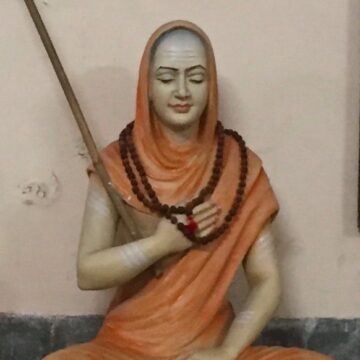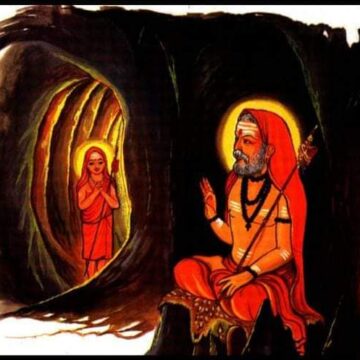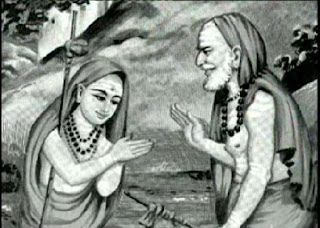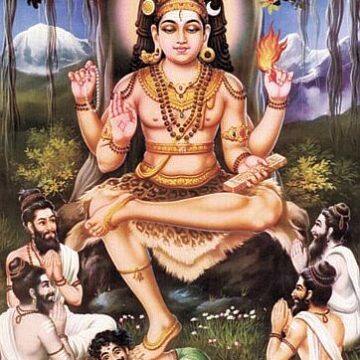This paper was originally written in Russian by Dr. Aleksandr A. Semenenko, a historian based in Voronezh, Russia.
Dr. Semenenko is one of the few Western scholars who have defended the Out-of-India theory which purports to explain the spread of the Indo-European languages. His work is ground-breaking, because he relies not only on textual or linguistic proof, but also on archaeological and material evidence. His researches have now provided a very solid archaeological underpinning for the OIT.
Dr. Semenenko has recently presented summaries of his findings at Sangam Talks:
Steppe Route of Indo European Dispersal:Preliminary Findings (https://www.youtube.com/watch?v=lgRdwkZnGqA)
The Tarimian Trace of the Indo European Dispersal (https://www.youtube.com/watch?v=jyY7EHotXto)
The Rigveda Chronology And The Indo European Homeland (https://www.youtube.com/watch?v=S1Bsm79cVvk)
Dr. Semenenko's original and far-reaching work has been endorsed by such pioneers of the OIT such as Shrikant Talageri and Koenraad Elst: see for example, the Sangam Talk "Getting serious about the "Aryan" debate" (https://www.youtube.com/watch?v=rDSy9gPAB3s)
The bulk of Dr. Sememnenko's work is in Russian. However, he has also written extensively in English as well, and interested readers can find his path-breaking papers at:
https://independent.academia.edu/AlexandrSemenenko/Articles-in-English
or at:
https://www.researchgate.net/profile/Aleksandr-Semenenko-2
In this monograph, which is the first of his papers to be published in India, Dr. Semenenko shows that Rigvedic hymns mentioning forts being besieged or stormed do not occur in the oldest layers of the Rigveda. The oldest mentions of forts occur in a peaceful context. Dr. Semenenko also decisively refutes the AIT, according to which the earliest hymns should have described the destruction of forts. The author demonstrates that the description of fortresses in the Rigveda and the Atharvaveda reflect a unique chain of archaeological events in the history of South Asia — wherein a period when fortified settlements were besieged and burned down was followed by a period when they existed peacefully. This sequence of events corresponds to a transition from the Early Harappan period to that of Mature Harappa, and was never repeated again. With this insight, Dr. Semenenko has succeeded in establishing an absolute chronology for the Rigveda (which was hitherto not possible).
The translator dedicates his translation to the memory of his late lamented Russian teacher, Dr. Ganesh.V. Marathe. This translation was rendered possible only owing to Dr. Marathe's charity towards a schoolboy who could not have afforded to pay for the Russian lessons.
Category: <span>Uncategorized</span>
Hindu, Hinduism, Hindudtva – Part 2
In the second part, Dr. Pingali Gopal discusses the evolution of political Hindutva after independence, and sheds light on the failure to define the basic terms as we struggle with the alleged rise of ‘Hindu fundamentalism'.
Hindu, Hinduism, Hindutva – Part 1
Who exactly is a ‘Hindu’ and what are ‘Hinduism’ and ‘Hindutva’? Does it mean the land (geography), ancestral roots (history), or a shared culture?
Dr. Pingali Gopal tackles this proverbial bull by the horns, systematically looking at attempts to define and distinguish ‘Hinduism’ and ‘Hindutva’ by Western thought, the Indian liberal elite, and practising Hindus.
Śaṅkara Charitam – a re-telling – Chapter -14 – Aja Bakṣiṭha Bāśyaṃ
Chapter 14 of Śaṅkara Charitam, titled Aja Bakṣiṭha Bāśyaṃ, takes us through the experience of Śaṅkara’s Guru Govinda Bhagavatpāda learning from Gauḍapāda, cursed to be in the form of Brahmarākṣasa. What happens after the lessons are over, where destiny takes each of them - Śaṅkara, his Guru Govinda Bhagavatpāda, and his Guru's Guru Gauḍapāda; will be revealed in this chapter.
Śaṅkara Charitam – a re-telling – Chapter-13 – At the feet of the Guru
Chapter 13 of Śaṅkara Charitam takes us through Śaṅkara’s experience with his Guru, Govinda Bhagavatpāda, the completion of his education, and Guru's blessings and final teachings for Śaṅkara to take with him in the world and tackle the thick forest of ignorance enveloping the minds of the people.
Gauḍapāda as Brahmarākṣasa finds Govinda Bhagavatpāda acceptable as a disciple, and the teaching starts atop the pipal tree in which the Brahmarākṣasa resides..........
Unseen Temples of India – Legacy and Narrative – Part 2
Building a separate structure to house murtis, carriers of divinity, for personal and public worship of deities is an old tradition prevalent in India.
Manisha Chitale takes us through the history and evolution of temple architecture in the country and how temples have shaped the Sanatana dharmik civilisation.
Śaṅkara Charitam – a re-telling – Chapter-12 – Śivaḥ kevalo’ham
Chapter 12 of Śaṅkara Charitam takes us through Śaṅkara’s meeting with his Guru, and the Guru's acceptance of Śaṅkara as his disciple.
Govinda Bhagavatpāda asks the boy standing at the foot of the cave, inside which he meditated for centuries, to introduce himself and Śaṅkara calls himself - "Śivaḥ kevalo’ham".
The life of Gauḍapāda as a Brahmarākṣasa and his meeting with Govinda Bhagavatpāda is also mentioned in this chapter.
Unseen Temples of India – Legacy and Narrative – Part 1
Building a separate structure to house murtis, carriers of divinity, for personal and public worship of deities is an old tradition prevalent in India.
Manisha Chitale takes us through the history and evolution of temple architecture in the country and how temples have shaped the Sanatana dharmik civilisation.
Śaṅkara Charitam – a re-telling – Chapter-11 – Patañjaliṃ-Gaudam-Govindaṃ
The boy Śaṅkara continues on his path, in search of his Guru. Meanwhile, Patañjali Mahaṛṣi, who is Śānta-svarūpa of the ugra-rūpa of Ādiśeṣa, aims to teach a thousand students at once; and places two conditions in front of his students. Both conditions are violated by his students, and the aftermath and its ramifications on the journey of Śaṅkara are discussed.
Śaṅkara Charitam – a re-telling – Chapter-10 – Śaṃbhu-Śaṅkara
In the 10th Chapter of Śaṅkara Charitam, Śaṅkara starts his life as a saṃnyāsi and takes his first steps toward his Guru, his destiny. Shri Ramesh Venkatraman also delves into evidence regarding Śaṅkara being an avatāra-puruṣa, the active and vocal aspect of Śiva.








